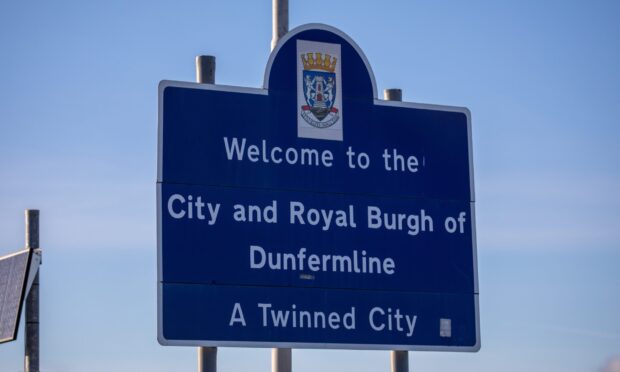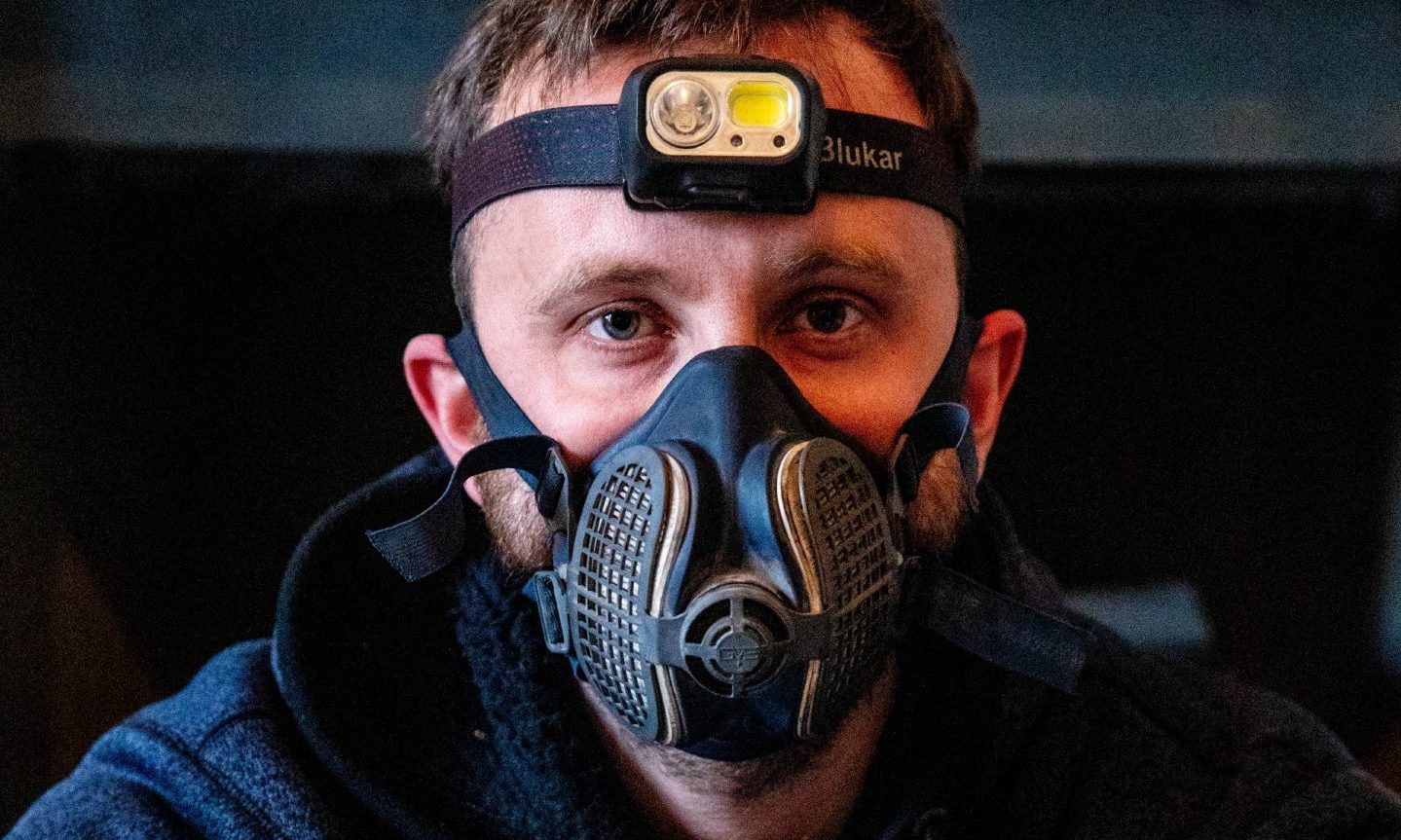
Wildlife worker April Dodds couldn’t believe her eyes when she saw the first x-rays of the Perthshire beaver she had been nursing back to health.
Beaver Fig, whose injuries have re-ignited the debate around killing the mammals, had been shot in the face.
“He was walking around like that for who knows how long,” April told The Courier.
“Can you imagine a human walking around like that? Fig didn’t have to suffer like that.”
April, 34, cared for Fig during his rehabilitation at the SSPCA National Wildlife Rescue Centre.
Fig made headlines after he was shot in the face and left for dead in Perthshire.
His successful release was widely publicised, with much criticism of the botched shooting.
After being shot in January, Fig had lost a lot of weight. April recalled that the gunshot wound on his face was dirty.
She estimated that Fig may have been wandering in this dazed state, severely injured, for as long as a week.
New figures from NatureScot reveal that 63 beavers were killed under licence in Scotland in 2022.
How many people have a licence to kill beavers in Perthshire?
There are more than 1,500 beavers in Scotland across 424 beaver territories.
Beavers are protected by law as a European Protected Species and to kill a beaver legally, you must hold a licence. People can apply for these licences to prevent damage to their crops or public safety.
38 people in Scotland currently hold a licence to kill beavers, according to a Freedom of Information request sent into NatureScot.
Three of these are in Angus, and 35 are in Perth and Kinross.
These licence holders must show evidence of damage occurring or a potential public health risk to be granted a licence to kill.
NatureScot say there is “no evidence” that Fig was shot as part of licenced beaver control.
“More than 50% of the beavers that we see [at the SSPCA centre] have been shot,” April said.
“Some of them are very young as well. To see a female and her kits all shot is quite horrifying.
“It’s really bad. I remember one kit that weighed just four kilos.”
Intense rehab begins for Perthshire beaver Fig
A member of the public found Fig in an undisclosed area of Perthshire in January.
Fig then spent three months at the SSPCA centre where staff worked hard to rehabilitate him.
April recalled: “We weren’t even sure what was wrong with him in the first place.
“When he arrived, we made a homemade lodge for him with lots of leaves and branches that he would naturally find to eat in the wild.
“We got him in, got him settled and got him some water for him to swim in. Beavers can get very stressed – they need to be able to swim and they need to be able to dive so he had large baths for that.
“It was only when I left work that first day that I thought: I hope he’s not been shot in the face.
“I could see the blood.”
Shrapnel in Fig’s x-ray confirmed April’s worst fears
Unfortunately, April’s suspicions were correct.
The gunshot wound on Fig’s face damaged his front teeth, which are vital in order for a beaver to survive.
“Two days later, he got [put] under anaesthetic. The shot appeared when we did an x-ray on his face. And that’s when we knew.”
Fig had not eaten much since he arrived at the centre, and April and her team then realised why. She said: “His top two incisors had been completely shot off his face.”
“It was just awful,” she said, “I can’t even describe it.”
“Part of me just knew it had happened.
“I honestly could not believe my eyes – none of us could.
“We were just so upset. At that point I really thought he was going to be euthanised.
“We couldn’t see any teeth at all and we didn’t know how we were going to feed this animal if he’s got no teeth.”
Luckily, they identified that the root of Fig’s tooth wasn’t damaged, meaning it could grow back.
The team were so determined to get Fig nursed back to health that they would spend an hour each day just making his meals.
They would grate vegetables for Fig and plane wood into tiny shavings.
The vet team also reshaped Fig’s teeth to ensure they wouldn’t damage his mouth as they grew in.
Beaver Fig’s release was the ‘best day ever’
Three months of hard work later, Fig was released back into the wild at the Argaty Red Kites Centre.
April said it was an “honour” to be involved in Fig’s rehabilitation and release in March 2023.
“It was the best day ever – as cliché as it sounds, it literally was.”
April and her team were overjoyed to get Fig into a state where could be released back to the wild.
She added: “It was amazing achievement for the whole team.
“And it was an honour for me to be part of it.”
Sadly, Fig’s miraculous recovery is a rare case.
April has seen many beavers brought in after being killed by gunshot wounds.
“It’s really, really grim,” she said.
“We don’t see beavers often and they’re such an amazing species. We love them.
“Every time we get the beaver call, it always sends everyone into a bit of a frenzy because they’re such an amazing animal.”
But unfortunately, when the team get a beaver call, in over half of cases it is because a beaver has been shot. April said this is “really disheartening”.
“It feels like our hands are tied,” she added.
“We can’t really do much from our end unless those animals are alive.
“And if they are alive, we will do everything in our power to get them released.”
‘Soul-destroying’ to see beavers killed
The wildlife manager was brought to tears when asked her message to the individual that shot Fig.
“Persecution shouldn’t be an option – it certainly isn’t the only option,” she said.
“There are ways to move these animals if you are unhappy with them, for the sake of everyone that’s worked so hard to bring these beavers back.”
However, it’s worse for April to think about beavers that are shot, but aren’t lucky enough to be found and brought in for help.
“The way that some beavers are being shot isn’t even humane,” April added.
“In the case of Fig, he wasn’t even dead.
“He was walking around like that for who knows how long. Can you even imagine a human walking around like that? Fig didn’t have to suffer like that.
“It’s just soul-destroying.”
No beaver should ‘die slowly from their wounds out of sight’
James Nairne of the Scottish Wild Beaver Group said the group is “appalled by the suffering inflicted on Fig the beaver”.
He added: “This incident highlights the animal welfare impact of the government’s current licensing policy.
“Fig was found and rehabilitated after horrific gunshot injuries, but other beavers meeting similar fates may die slowly from their wounds out of sight.”
“We call for an urgent review of the licensing system on animal welfare, as well as wider environmental grounds.
“Shooting in the water should be ended and the handing over of carcases should be a mandatory requirement to qualify for future lethal control licences.
“While 2022 saw a reduction in the number of beavers being shot, there are still far too many shootings and too few translocations to new areas.”
Donald Fraser, NatureScot’s head of wildlife management, said: “We believe, like SSPCA, that animal welfare is paramount and were dismayed to hear about the injuries Fig experienced and are pleased he has been rehabilitated and released to an area where there are no licences for lethal control in place.”
In 2022, no beavers bodies’ were handed in from licenced control – meaning, any licence holder that killed a beaver did not hand the animal’s body in.
Donald admitted that the low levels of beaver carcasses brought in for post mortem to date has been “disappointing”.
He added: “The submission of carcasses will now therefore be a condition of a lethal control licence and while we recognise there may be health and safety issues associated with retrieving carcasses in some cases, we expect this to be the exception.”

















Conversation